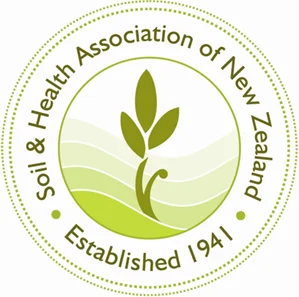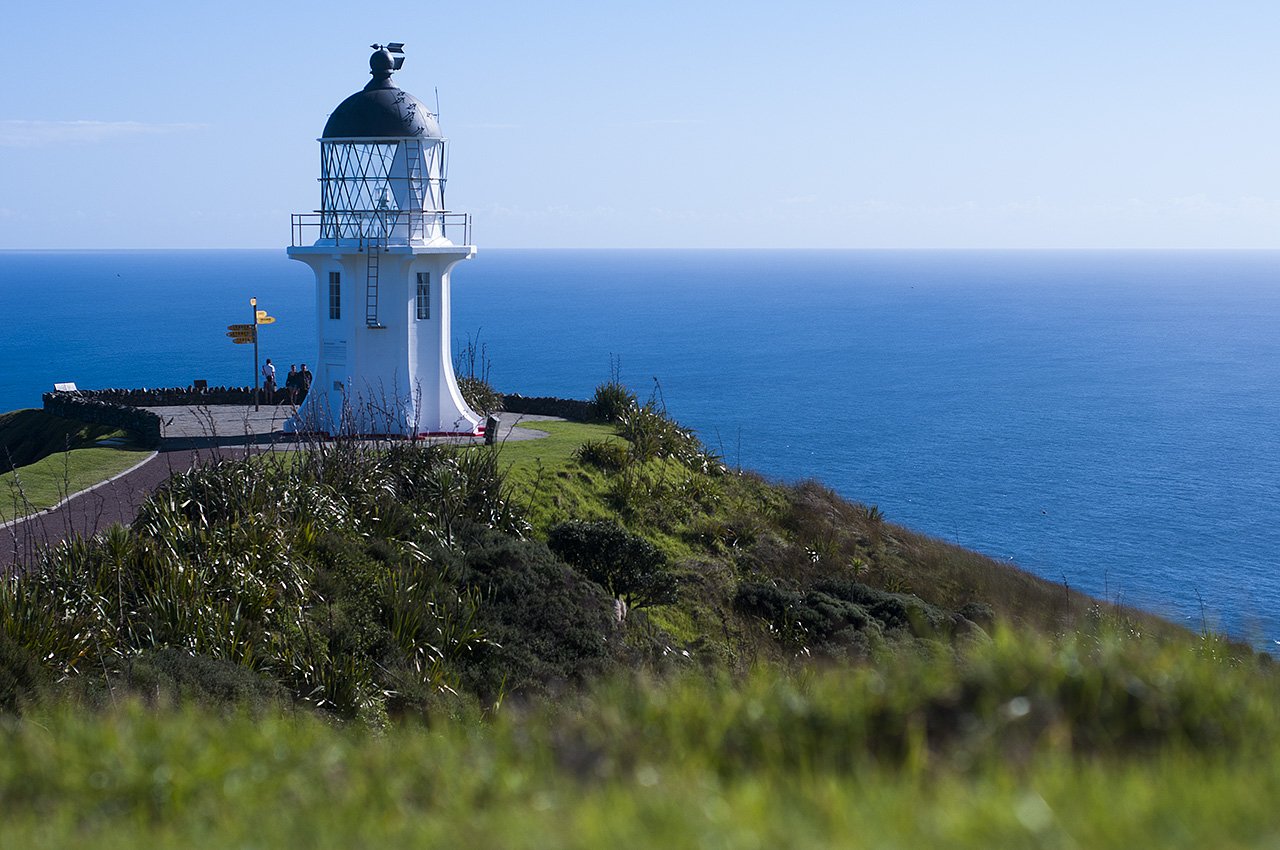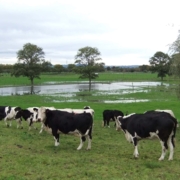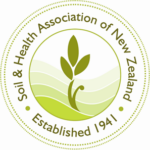Soil & Health submission on the Gene Technology Bill
17 February 2025
To the Health Select Committee, New Zealand Parliament
Recommendations
- The Soil & Health Association of New Zealand opposes the Gene Technology Bill in its entirety.
- We recommend the Bill be withdrawn.
- HEARING: We wish to be heard
Introduction: Who we are

The Soil & Health Association of New Zealand is an incorporated society and not-for-profit registered charity founded in 1941, and is one of the oldest organic organisations in the world. We champion society’s collective responsibility to protect the health of our soils for future generations. We do this to promote the development of the best physical health and spiritual well-being of all people.
Our motto is ‘Oranga nuku – oranga kai – oranga tāngata / Healthy soil – healthy food – healthy people’.
We advocate for organic and regenerative production that works with nature and avoids synthetic fertilisers and pesticides. We’re the largest flaxroots membership organisation supporting organic food and farming in Aotearoa New Zealand. Soil & Health is also the owner of BioGro NZ Ltd, the largest organic certification agency in New Zealand.
We represent approximately 17,000 members and supporters around Aotearoa New Zealand, including consumers, home gardeners, farmers, business people, chefs, scientists and more. Soil & Health provides education and information on the benefits of organic growing, healthy eating and healthy lifestyles for Aotearoa New Zealand and the world.
Our members and supporters value food and lifestyles that enhance the environment and nourish people and animals. Organic and regenerative farming offer solutions to the threats we are facing today: climate change, soil and water pollution, loss of biodiversity, topsoil loss, degrading health and fertility both for people and nature.1
The Soil & Health Association (hereafter Soil & Health, or the Association) welcomes the opportunity to submit on this Bill.
Definitions
We recognise that gene technology encompasses a range of technologies. What we are most concerned about is keeping robust and precautionary regulation for genetic engineering.
Genetic engineering (GE): in our submission we use this term for all types of genetic engineering, including gene editing techniques (like CRISPR-Cas9), synthetic biology, anything with “novel” DNA and “new breeding techniques”, recombinant DNA techniques and RNAi (“gene silencing”).
What the Bill calls genetically modified organisms (GMOs) are therefore included in the above definition.
Submission
Summary and Overview
The Soil & Health Association of New Zealand opposes the Bill in its entirety and asks for it to be immediately withdrawn.
Our members and supporters are extremely concerned about the Bill, which represents unprecedented deregulation of the use and consumption of genetically modified organisms (GMOs) in Aotearoa New Zealand.
This Bill, if enacted, would mean that New Zealand would have one of the weakest regulatory regimes for GE in the world, leaving us open to being a global outlier and guinea pig. The Bill lacks the rigour, checks, balances and liability provisions that would safeguard people and the environment.
We are highly concerned about the short timeframe allowed for the drafting of the legislation and for public consultation. If the Bill is not withdrawn, we submit that at least six more months be given for adequate public consultation.
Gene technology is a huge topic with ramifications for food, agriculture, tikanga Māori, te Tiriti o Waitangi, biodiversity, conservation, economics, trade, health and medicines, science and research, animal welfare, ethics and more. New Zealanders deserve a fair, transparent and thorough process, which the Bill and its development fails to offer.
The Regulatory Impact Statement, compiled by the Ministry of Business, Innovation and Employment, acknowledges the gaps in the RIS, including the uncertainty of benefits. It fails to adequately explore the risks, the economic impacts, and the opportunity costs.
The provisions in the Bill leave New Zealanders and our environment wide open to risk; and the Bill only covers “regulated organisms” – omitting those genetically engineered organisms that the Regulator (a single person) can deem to be safe and therefore not covered by regulation at all.
The lack of safeguards in the Bill pose a threat to home gardening, farming, forestry and all forms of primary production. The removal of the precautionary principle means farmers and any other primary producers risk increased costs, unwanted GE contamination, devaluation of their products and organic certification loss.
The Bill disregards consumer choice; it would take away our right to know what we are eating, how it’s produced, and the right to choose GE-free foods, seeds and other products.
The Bill is a direct breach of Te Tiriti o Waitangi and marginalises the interests and concerns of Māori. There has been inadequate consultation with Māori. Genetic engineering goes against spiritual beliefs, whakapapa, mana, mauri, wairua and tino rangatiratanga.
We cannot afford the potential for risks to our unique and fragile indigenous ecosystems. Why spend millions each year on pest control, biosecurity research and infrastructure if we allow GMOs with unknown risks to spread throughout the entire country?
New Zealand’s fortunate GE-free status is the envy of other countries and gives us great economic advantages on the world market. If the Bill proceeds, markets could be lost and farmers and food producers could lose millions of dollars in export income.
While the Bill does not mention climate change, proponents of GE claim that GMOs could help reduce agricultural greenhouse gas emissions – this was referred to in the Regulatory Impact Statement compiled by the Ministry for Business, Innovation and Employment. However this kind of “quick fix” is primarily promoted by vested interests, and based on a reductionist, rather than holistic and interconnected, world view.
Such an approach also comes with a huge opportunity cost – it takes investment and focus away from regenerative, organic agriculture and research, which provide long-term, sustainable, nature-based environmental and climate mitigation solutions for future generations.
We must keep striving for a real “clean and green” Aotearoa New Zealand, for the benefit of all. We cannot allow companies and institutions to release GE products with little or no regulatory oversight, while the liability for, and impacts of, any adverse effects would fall to GE-free producers, the public and the wider environment.
Specific Points
Regulation of Risk and the Precautionary Principle
The Gene Technology Bill’s stated purpose is “to enable the safe use of gene technologies and regulated organisms by managing their risks to—
- the health and safety of people; and
- the environment.”
- This wording is not strong enough for robust regulation, and weakens the protections we currently have.
- Soil & Health advocates for the retention of our existing robust and precautionary legislation (the Hazardous Substances and New Organisms Act – HSNO Act), which has served us well and protected us against adverse effects of GMOs that have been experienced overseas.
- The HSNO Act states its purpose to be: “to protect the environment, and the health and safety of people and communities, by preventing or managing the adverse effects of hazardous substances and new organisms.”
- This wording acknowledges there are or can be adverse effects, and preventing them – not only managing them – is the purpose of the legislation. Soil & Health wishes first and foremost to prevent adverse effects of GMOs.
- The current Bill has no mention of the precautionary principle, while the HSNO Act states “the need for caution in managing adverse effects where there is scientific and technical uncertainty about those effects.”
- While scientific knowledge is increasing, there continues to be much uncertainty about the effects of GE, so it’s vital to keep the precautionary principle.
- One of the objectives of the Bill is to create “risk-proportionate regulation”. However it fails in this purpose.
- The four risk tiers include exempt activities: “minimal-risk products of gene editing, for example, products of editing techniques that result in organisms that cannot be distinguished from those produced by conventional processes”.
- Given the lack of long-term use of gene editing globally, especially outside the laboratory, Soil & Health contends we need a robust and precautionary approach. ALL GMOs must be regulated, with NO exemptions, as per the HSNO Act.
Removal of Choice for Consumers
- The Bill takes away choice from consumers about the food we eat and grow, and the products we buy.
- Our members and supporters, and the wider public, want to know not just what is in our food (and other products), but also how it is produced. We want food that is natural and unadulterated, ethically produced, free from harmful chemicals and toxins, free from GMOs, and produced in ways that enhance our soils, environments and communities.
- We want to know how products are produced – for example whether child labour is involved, or GE or herbicides. This is because we are concerned not solely with our own and family health, but also with the health of the wider environment and of the people who produce our food.
- We want transparency, traceability and labelling on food and all other consumer products. Regulation must ensure that any products using GE at any stage of production are clearly labelled as such, to allow for consumer choice and transparency.
- Therefore, regulation of GMOs must be both process-based and product-based (not either/or).
- At present, many products carry either an organic certification label, and/or a GE-free or non-GMO label. Woolworths and Foodstuffs supermarket chains both have non-GMO brand policies.
- However this Bill would put this kind of labelling at risk, and consumers would be left in the dark.
- It would also probably make organic and non-GMO products more expensive for the consumer as it would be more onerous for producers to ensure their production is GE-free.
- GE products are NOT the same as natural products and therefore must not be allowed to be exempt from regulation. Unintended changes in gene edited organisms occur, and are different from random mutations in nature.2
- The Bill allows one person – the Regulator – to decide whether a GE process or product is to be regulated or not. If not regulated, GMOs would be invisible and could enter our food chain and environment with no safety assessment, no public notification, no labelling, no traceability, and not be subject to any controls or monitoring.
- This creates unacceptable levels of risk and lack of choice.
- Lack of adequate labelling poses a health risk, as allergens and toxins can be produced as a result of gene technologies.
- Even though humans have been eating GE ingredients for some years, we don’t know enough yet about the effects of GE foods on the human body, or on epigenetic effects, as there has been very little research on this. GE foods and ingredients may contain combinations and components never seen before by our gut bacteria and other bodily systems.
- We are concerned not just about the potential for adverse effects directly as a result of genetic engineering, but also any adverse effects of other technologies used in combination with GMOs. This includes herbicide residues in herbicide-resistant crops.
- Other emerging technologies – such as synthetic biology, generative artificial intelligence (AI), and nanotechnology – are beginning to be used in combination with GE. An example is the use of generative artificial intelligence (AI) in the creation of GE plants.3
- Given the known and unknown risks of GE and AI, and the increasing ease and speed of developing gene-edited products, such combinations of risky technologies must be strictly regulated.
- Therefore the precautionary principle needs to be retained in our legislation of GE.
Risks for Farming, Forestry and Other Primary Production
- The Bill gives the Regulator the ability to allow some gene technologies to go completely unregulated. This means some GMOs could be released into the outdoor environment, and/or into agricultural and veterinary inputs, with no controls or monitoring. This puts at risk all forms of primary production in Aotearoa New Zealand.
- Farmers, growers, beekeepers, foresters, aquaculture operators and other primary producers would risk losing markets, organic or non-GMO certification if they have it, income and time, and potentially face legal costs, as has happened already in a number of other countries.4
- In particular the Bill puts at risk primary producers who want to remain GE-free, including organic production. GE agriculture is completely incompatible with organic and regenerative agriculture. Organic standards around the world specify that GE techniques and organisms are not to be used in certified organic systems.
- Co-existence of GE and non-GE crops is virtually impossible due to the many vectors of DNA. In the case of plants for example GE contamination can be spread by pollen, and by seed spread via wind, water, animals, human activity.
- GE ryegrass for example, if introduced, would inevitably spread across boundaries and contaminate farms, gardens and natural ecosystems, with unknown effects. In the USA, GE bentgrass spread from supposedly controlled plots.5
- Farmers across the board are concerned about contamination because of potential impacts on productivity, market resistance, livelihood and ecological concerns, and want strong legislation to prevent GE contamination.
- Forestry must not be put at risk by any form of GE. Both main sustainable forestry certification schemes in New Zealand – Forest Stewardship Council (FSC) and Programme for the Endorsement of Forestry Certification (PEFC) maintain GE-free policies for all forests certified to their standards.
GE is Not a Solution to Climate Change and Pollution
- A permissive GE regime is not a coherent response to the interconnected issues of climate change, loss of biodiversity, global warming, greenhouse gas emissions, topsoil loss and nitrate leaching from farming into waterways.
- New Zealand is in a prime position to implement coherent climate, environmental and agriculture policies. A huge part of that advantage is this country’s existing robust and precautionary policy on GMOs.
- GE ryegrass and clover have been mooted as part of the solution to reducing New Zealand’s methane emissions from ruminant animals. However this is far from proven, they may have adverse effects, and are not part of the holistic approach that is needed.
- Many GE crops are designed to be used with harmful herbicides which are contributing to environmental degradation, biodiversity loss, and herbicide resistance.
- Farmers and the New Zealand public need time to assess the risks and benefits of continuing research into GE, who would benefit from it, and how it compares with other strategies to reduce agricultural greenhouse gas emissions.
Te Tiriti o Waitangi and Tikanga Māori
- Soil & Health is a Treaty partner with Te Waka Kai Ora,6 the Kaitiaki of the Hua Parakore verification system, the world’s first indigenous verification system for food and primary products.7
- Te Waka Kai Ora has expressed complete opposition to the Bill for several reasons. We fully support their submission.
- The Crown has not engaged with Māori adequately or sufficiently in the development of the Bill. Māori are rights holders, not stakeholders, and should be treated as such. This is stated in the Universal Declaration of Human Rights and the United Nations Declaration of Indigenous Peoples.
- The Bill gives the Regulator the power to exempt specific gene technologies from regulation, allowing Aotearoa New Zealand to be subject to assessments made by overseas regulators.
- This constitutes a breach of Te Tiriti o Waitangi, as it grants sovereignty to external entities, rather than to iwi and hapū, who never ceded sovereignty over their lands. Article 2 of Te Tiriti recognises Māori rangatiratanga over their lands and taonga.
- The Bill has the potential to devastate the Hua Parakore verification system, which is recognised globally for its holistic approach to food and primary products. This system is grounded in Te Ao Māori, derived from the wisdom of Māori tūpuna (ancestors) and supported by both tangata whenua and tangata Tiriti, who are seeking indigenous growing kaupapa led by indigenous knowledge reclamation. Hua Parakore offers pure products based on integrity and whakapapa. However, the introduction of gene technology, particularly in outdoor applications, risks compromising traceability within this verification system.
- One of the Bill’s stated objectives is “to provide for ways to recognise and give effect to the Crown’s obligations under the Treaty of Waitangi”. There is already one claim before the Waitangi Tribunal that involves genetic engineering, namely Claim WAI262.8 Until this claim is settled to the satisfaction of Māori, no changes to legislation involving GE should proceed.
- Furthermore, the Bill provides for the establishment of a Māori Advisory Committee, while ensuring that the power of this Committee remains weak. The Bill states only that the Regulator should “have regard to advice” from the Committee, which will have no decision-making authority, nor the power of veto.
- The Bill marginalises Māori as it does the public and wider community. It limits the scope of the Māori Advisory Committee to gene technology issues involving indigenous species or “material adverse effects on kaitiaki relationships”. Therefore the Bill does not take into account whakapapa and a range of cultural and ethical considerations, including mana, mauri, whakapapa and wairua, while also recognising that Māori concerns extend beyond indigenous species.
Risk to Ecosystems, in Particular Native Ecosystems
- Aotearoa New Zealand has a unique environment with 80% of its native species being endemic.
- Many native species are already threatened, endangered, or at risk of extinction. Because we don’t know the impacts of GMOs within ecosystems, introducing GE could put native species even more at risk.
- GE plants – and the pesticides frequently used with them as part of the package – are a risk to bees and other pollinators. The flow-on multiplier effect within ecosystems is potentially enormous.
- While GE has been posited as a solution for pest control, there are risks and we may end up creating more problems.
- Scientists estimate that so far they have only identified a small proportion of the microorganisms in the soil,9 and there are many other species that are yet to be discovered and identified, such as invertebrates and marine organisms. We simply do not know enough about the complex interactions in ecosystems to risk releasing GMOs into the environment.
- Once GMOs are released into the environment, there is no turning back. We can’t contain or recall the crops, animals, fish, insects or microorganisms.
- Examples of unwanted GMO escapes include fluorescent zebrafish (“Glofish”) which are now wild in Brazilian rivers, and reproducing rapidly. Researchers are concerned about adverse impacts on aquatic ecosystems and endemic species.10
- The approval of GE salmon in North America was challenged in a federal court in California by Earthjustice and other claimants. GE fish could breed with, or outcompete, their wild counterparts.11
- Monarch butterfly numbers in the USA have plummeted over the past couple of decades, and GE crops have been cited as part of this decline. GE maize pollen has been found to harm monarch larvae,12 and other researchers have pointed to glyphosate-resistant GE crops as being a major factor in monarch butterfly decline.13
Economic and Financial Impacts, and Opportunity Costs
- The regulatory impact statement compiled by MBIE focuses strongly on the potential economic benefits of loosening the regulation of GE. However, it includes no assessment of economic losses resulting from this legislation, nor the opportunity costs.
- The RIS simply says there would be “Unquantified costs to organic/non-GMO primary producers.”
- The New Zealand Institute of Economic Research has produced a report detailing the economic risks of this legislation, and has estimated that “environmental release of GMOs in New Zealand could reduce exports from the primary sector by up to $10 billion to $20 billion annually”.14
- There are cases where countries have rejected crops and products contaminated by GMOs.15 This would be a significant risk for our export sector. Once GMOs are released in our environment, there is no turning back. Contamination will be inevitable.
- New Zealand has enjoyed an image of being clean and green, which has attracted tourists and our overseas export markets. This Bill risks damaging this image, our export and tourism sectors, and our economy.
- Organic exports would be particularly at risk because organic standards, driven by consumer demand, allow no GE use. According to the Organic Exporters Association of New Zealand, “in 2022–2023, New Zealand’s organic exports were valued at over $560 million, with $164 million exported with official MPI assurance. The remaining value was exported to markets without organic bilateral arrangements.”16
- The European Green Deal17 offers an enormous opportunity for New Zealand to build its GE-free and organic export production. Allowing the introduction of GMOs would take that incredible opportunity away from us.
- Opportunity costs would include missed opportunities to focus on research and investment into organic and regenerative farming systems that would mitigate climate, enhance soils, waterways, animal and human health, seeking to understand and work with nature, rather than trying to manipulate it.
- An example of this non-GE research and development is a lower methane-emitting sheep developed through selective breeding by AgResearch.18 New Zealand is a world leader in plant and animal breeding that doesn’t use GE, and this is what we need to build on.
- The benefits to a few corporations that develop and sell GE technologies must not come before people’s health, farmers’ ability to carry on biological, regenerative, GMO-free and organic farming, our unique environment and our chance to genuinely live up to our clean and green reputation in the global market.
Spiritual, Philosophical and Ethical Considerations
- Many of our members and supporters feel an intuitive discomfort and a deep spiritual dis-ease about genetic engineering. Many people feel we shouldn’t be engaging in the types of technology that seek to ‘play God’ and change the building blocks of life.
- Animal welfare is a high priority for our members, who are concerned about the ethics of GE animal experiments.
- We oppose the use of animals as “bioreactors” to produce therapeutic substances. GE experimentation on animals here in New Zealand for such purposes has produced no medical benefit and has resulted in much suffering. A report by GE Free NZ, drawing from AgResearch annual reports, catalogues the deaths, deformities, abortions, sterility and numerous other health problems that the GE research animals have been subjected to.19
- We are also opposed to the patenting of all life forms.
- This bill would allow international corporations and a small number of shareholders to control and own life in New Zealand. This will never benefit New Zealand and New Zealanders in a long-term and meaningful way.
Liability
- The Resource Management Act provides the ability for territorial authorities to make provision for liability, including the ability to require a bond from users of GE in the event of any adverse effects. We support this as it provides some financial protection for councils and communities.
- The Gene Technology Bill however contains no provisions for liability of the users of gene technologies should anything go wrong. The users of any gene technologies must be held legally and financially liable for any adverse effects of their processes, activities and products – including any waste products.
- If anyone has gone through a strict assessment process to use GE in the outdoor environment, they must be required to have commercial insurance in case of adverse effects. The Bill fails to require this.
- Previous outdoor GE trials in New Zealand have breached their conditions – all users of GE must be legally and financially liable for any breaches and escapes. The Bill fails to ensure this.
Local Democracy
- All councils from Auckland to Northland, and Hastings District Council, currently have precautionary, protective and/or prohibitive policies and plans.
- This has been at the behest of their communities, who want an extra level of protection from any adverse effects of GE in the outdoor environment, and/or to enable regions to promote their region and their products as GE-free.
- Soil & Health has supported councils in the Environment Court, which confirmed this right under the Resource Management Act to choose GE policies at city, district and regional levels.
- The Bill however expressly removes the right and ability of territorial authorities to determine their own GE policies and plans, as they currently enjoy.
- We oppose the specific removal of this right, because it is undemocratic, and a heavy-handed overreach of central government into the realm of local government decision-making.
GE in Health and Medicine
- The precautionary principle must apply to all gene technologies including those for medical purposes.
- Any uses of any gene technology for human health must be fully transparent and only used with genuine informed consent. Therefore we oppose the emergency authorisation of medical products using gene technology.
- Soil & Health opposes the Bill’s proposed mandatory medical approval of human medicines that have been approved by at least two overseas regulators. This could result in the forced use of a product with insufficient oversight, disregarding specific circumstances in Aotearoa New Zealand, including Te Tiriti o Waitangi and tikanga Māori. It fails to ensure informed consent, and could undermine protections outlined in the Bill of Rights. It fails to address the risk of regulatory capture by pro-GE interests in overseas jurisdictions.
- We oppose the use of animals as “bioreactors” to produce therapeutic substances, given the unnecessary harm, suffering and failures that have resulted from experiments using animals.
In summary
In summary, the Soil & Health Association rejects the Gene Technology Bill, and supports retaining the precautionary and protective GE legislation of the HSNO Act.
We appreciate the opportunity to submit on this critical issue and are available for further discussion or to provide additional information as needed.
References
- https://rodaleinstitute.org/science/ and https://www.cambridge.org/core/journals/renewable-agriculture-and-food-systems/article/organic-agriculture-and-climate-change/74A590FA3F35A79A858336CF341F416C ↩︎
- Lazar, NH et al. 2024. High-resolution genome-wide mapping of chromosome-arm-scale truncations induced by CRISPR–Cas9 editing Nature Genetics 56, 1482–1493, https://www.nature.com/articles/s41588-024-01758-y and brief analysis by Test Biotech here: https://www.testbiotech.org/en/unkategorisiert/crispr-the-unintended-genetic-changes-caused-by-gene-scissors-are-different-to-random-mutations/ ↩︎
- Save Our Seeds. 2025. When chatbots breed new plant varieties. http://upd-sos.zs-intern.de/fileadmin/files/SOS/ai/SOS_When_chatbots_breed_new_plant_varieties.pdf ↩︎
- For example Western Australian organic canola farmer Steve Marsh lost organic certification and income, and faces over A$800,000 in legal costs. https://www.ecowatch.com/organic-farmer-dealt-final-blow-in-landmark-lawsuit-over-monsantos-gmo-1882173163.html ↩︎
- Center for Biological Diversity. 2016. “Commercial Approval of Engineered Bentgrass Given Despite Failed Efforts to Stop Its Spread From Old Experiment Plots” https://www.biologicaldiversity.org/news/press_releases/2016/bentgrass-12-07-2016.html ↩︎
- Te Waka Kai Ora, the National Māori Organics Authority, https://www.tewakakaiora.co.nz/ ↩︎
- Hua Parakore verification system, https://www.tewakakaiora.co.nz/whatishuaparakore ↩︎
- Wai 262 Taumata Whakapūmau – claimants and their descendents, Waitangi Tribunal claim 262, https://www.wai262.nz/ ↩︎
- Fierer, N. 2017. Embracing the unknown: disentangling the complexities of the soil microbiome. Nature Reviews Microbiology. 15 https://www.nature.com/articles/nrmicro.2017.87 ↩︎
- Canadian Biotechnology Action Network briefing. 2022.
https://cban.ca/wp-content/uploads/GM-Contamination-Animals-Feb-2022-Update.pdf ↩︎ - Earthjustice media release. 5 November 2020. Federal Court Declares Genetically Engineered Salmon Unlawful. https://earthjustice.org/press/2020/federal-court-declares-genetically-engineered-salmon-unlawful ↩︎
- Losey, JE et al. 1999. Transgenic pollen harms monarch larvae. Nature 399
https://www.nature.com/articles/20338 ↩︎ - Pleasants, J. 2017. Milkweed restoration in the Midwest for monarch butterfly recovery. Insect Conservation and Diversity 10(1)
https://resjournals.onlinelibrary.wiley.com/doi/abs/10.1111/icad.12198 and Flockhart DTT et al. 2015. Unravelling the annual cycle in a migratory animal: breeding-season habitat loss drives population declines of monarch butterflies. Journal of Animal Ecology 84(1) https://besjournals.onlinelibrary.wiley.com/doi/full/10.1111/1365-2656.12253 ↩︎ - New Zealand Institute of Economic Research. 2024. Potential costs of regulatory changes for gene technology: Economic assessments of an MBIE proposal. https://drive.google.com/file/d/17fC5qTDVscJBfuKGIG1oopjnXI0oib1b/view ↩︎
- EU detects GM rice in Pakistan’s basmati consignment. 7 August 2024. The Hindu. https://www.thehindubusinessline.com/economy/agri-business/eu-detects-gm-rice-in-pakistans-basmati-consignment/article68497159.ece ↩︎
- Organic Exporters Association of New Zealand, retrieved from their website 16.2.2025 : https://www.organictradenz.com/who-we-are ↩︎
- European Commission. Retrieved from their website 16.2.2025 https://commission.europa.eu/strategy-and-policy/priorities-2019-2024/european-green-deal_en ↩︎
- Low methane sheep: Breeding for the future. AgResearch website, retrieved 17.2.2025. https://www.agresearch.co.nz/our-research/low-methane-sheep/ ↩︎
- Claire Bleakley. 2015. GE Animals in New Zealand: The First Fifteen Years. GE Free New Zealand (in food and environment) https://www.gefree.org.nz/assets/pdf/GE-Animals-in-New-Zealand.pdf ↩︎






